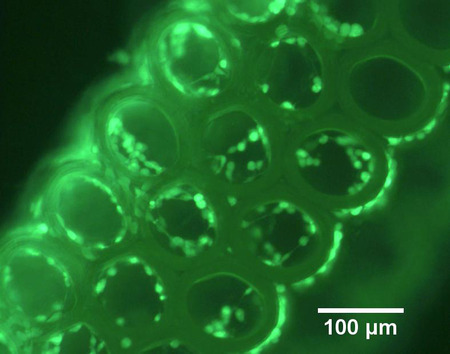Researchers developing techniques to 3D print extremely small objects for medical purposes have had a problem. To fuse material at the nano scale, a “two photon” technique is used. The material becomes solid when exposed to the targeted photons.
However, bio material is not typically fusible, so researchers often print a scaffold on which the bio material is deposited. The problem is that photo-curable scaffold material is often toxic, rendering medical use of the print impossible.
Enter Riboflavin, also known popularly as Vitamin B2. It turns out that B2, when pre-mixed with specific chemicals, becomes photo-curable. The treated B2 is entirely non-toxic and now enables full use of 3D printing for medical purposes.
This could also mean there’s a new way of delivering vitamins: direct insertion.
Via Kurzweil


